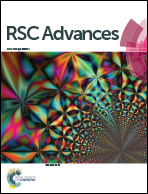A non-destructive, rapid and inexpensive methodology based on digital images for the classification of natural tannin extracts
Abstract
One way to produce tannins is through their extraction from trees, which are an abundant resource and are safe for the environment and human health. Thereby, it is possible to produce tannins in an environmentally friendly way due to its renewable sources. Also, the applications of these compounds have increased in order to obtain new materials. In this study, a methodology was developed for the identification and classification of six commercial tannin extracts by type of plant (chestnut, valonea, tara, myrobalan, quebracho and black wattle) using multivariate analysis of digital images acquired through a commercial scanner. The first two principal components of the principal component analysis showed a well-defined separation of the extracts into six distinct classes. Hierarchical cluster analysis corroborates this separation. Support vector machine discriminant analysis (SVM-DA) and partial least square discriminant analysis (PLS-DA) indicated good classification results. The SVM-DA algorithm presented better results than the PLS-DA, with both sensitivity and specificity of 100%. Multivariate analyses of vegetable tannin extracts through scanned images offer equivalent results to those obtained by FTIR and NIR without the need to invest in expensive and sophisticated equipment, according to green chemistry principles.


 Please wait while we load your content...
Please wait while we load your content...